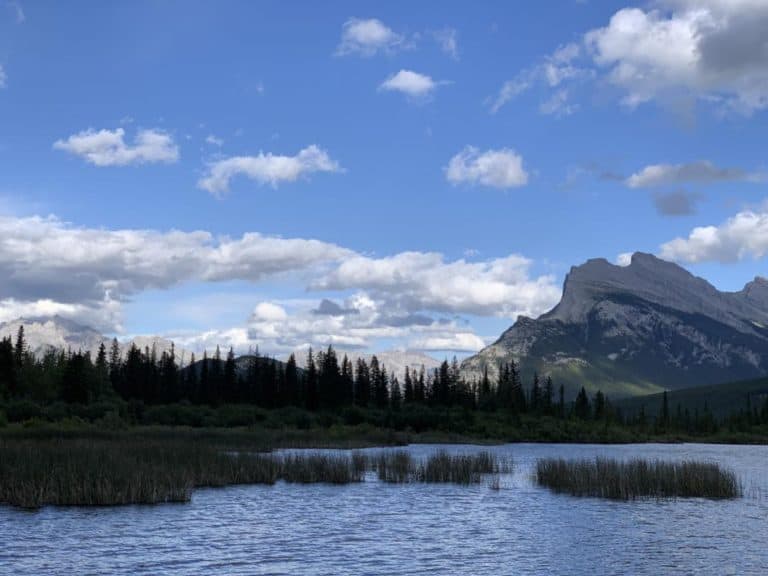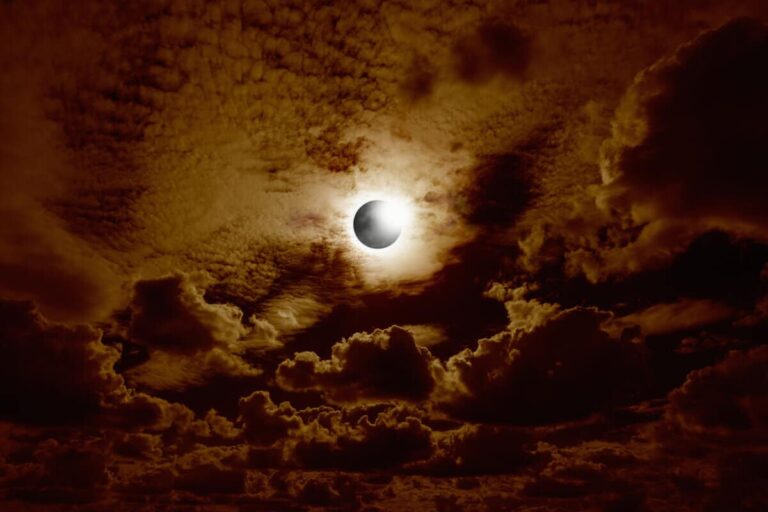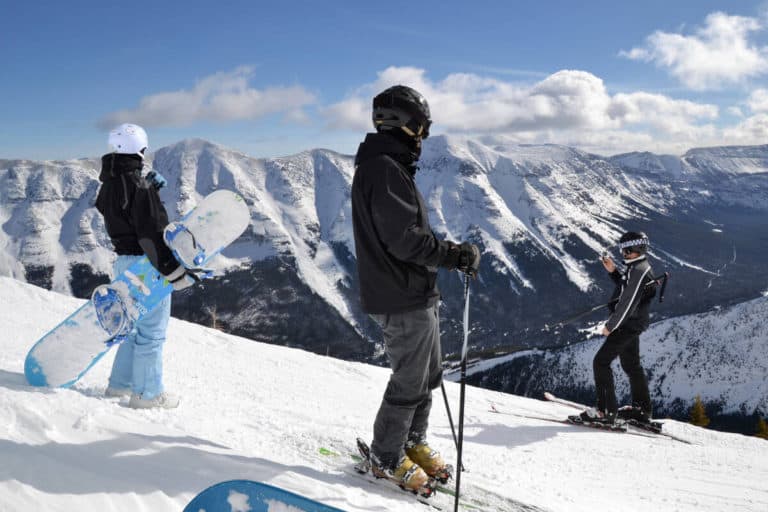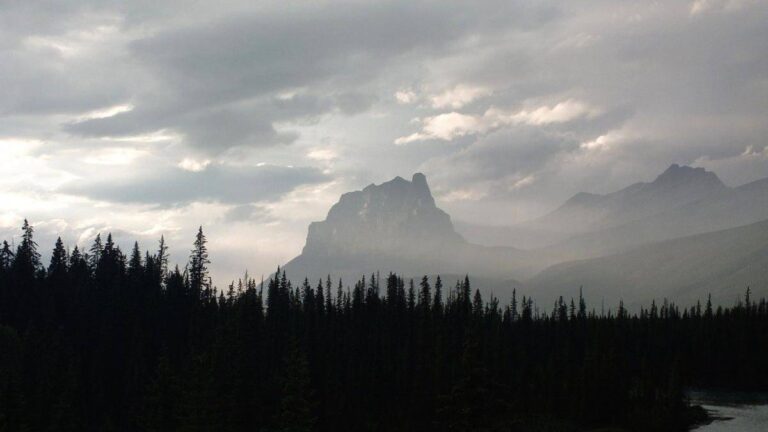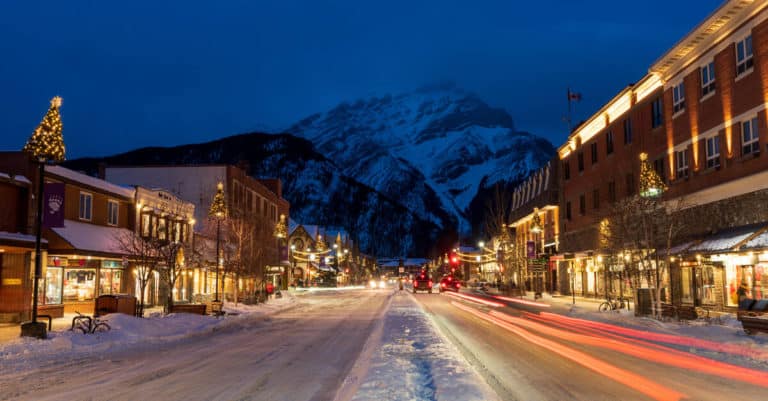Bucket List Destination Banff: 24 Reasons Why to Visit in 2025
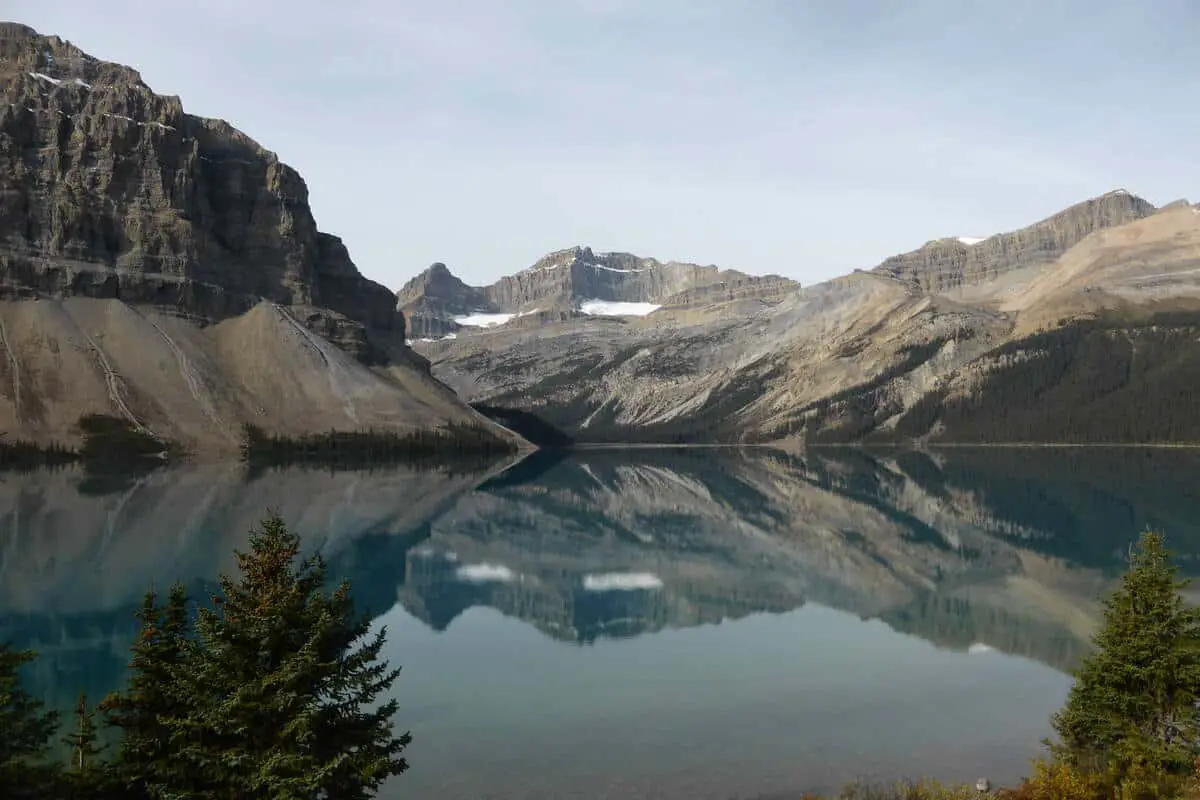
The breathtaking scenery makes Banff a coveted bucket list destination. In case that’s not enough for you, or you still need some convincing, you’ll find 24 reasons to visit the park in this post.
I get it, different people, different desires, different wishes. One person might find Banff National Park more alluring than another. But I listed 24 good reasons to put it on your bucket list, so I’m sure there’s something for you here.
The only thing Banff lacks is a seaside beach…
If you don’t mind that, I invite you to have a look at the extensive list below!
1. Stunning Scenery

Banff National Park is located in the heart of the Canadian Rockies and boasts some of the most spectacular scenery in the world. The park is home to towering mountains, stunning turquoise lakes, and never-ending forests, making it a paradise for lovers of the outdoors and nature enthusiasts. Some of the most iconic sights in the park include Moraine Lake and Lake Louise.
Here are five reasons the scenery of Banff National Park should be on your bucket list.
- Rocky Mountains: Banff National Park is in the heart of the Canadian Rockies, offering you breathtaking views of mountains, glaciers, and alpine lakes. The park’s rugged terrain provides a unique and awe-inspiring landscape.
- Glaciers: Banff is home to several glaciers. You can explore these glaciers on guided tours or by hiking on nearby trails.
- Lakes: Banff National Park has several stunning lakes, including Moraine Lake and Lake Louise. These lakes are known for their bright blue-green color and clear waters, creating a unique and beautiful landscape.
- Wildlife: Banff is home to a diverse range of wildlife, including elk, deer, bears, bighorn sheep, and more.
- Range of hiking trails: Banff offers more than 1,600 kilometers (1000 mi) hiking trails for visitors of all skill levels, from easy walks to challenging hikes.
- Did you know: There’s a mountain that’s shaped like a castle? Visit the aptly named Castle Mountain along the Bow Valley Parkway, and you’ll understand why.
2. Wildlife

Banff is home to various wildlife, including grizzly and black bears, elk, moose, and wolves. These animals can thrive in their natural habitat due to the park’s protected status and conservation efforts. The park also has several interpretive programs and guided tours focusing on the park’s wildlife, including bear-watching and wolf-howling tours.
Here are five reasons the wildlife of Banff National Park should be on your bucket list.
- Grizzly bears: Banff is home to a significant population of grizzly bears, a threatened species in North America.
- Wolves: Banff is also home to a significant population of wolves, a keystone species in the park’s ecosystem.
- Elk: Banff is home to a large population of elk, a common sight in the park’s meadows and valleys.
- Bighorn sheep: Banff has a significant population of bighorn sheep known for their impressive horns and agility on steep terrain.
- Range of other wildlife: Banff is home to a diverse range of other wildlife, including mountain goats, cougars, lynxes, and many more.
- Did you know: You can view both grizzly AND black bears in Banff National Park, which is not true for all national parks?
Want to know more about wildlife in the park? Read this guide to wildlife in Banff and how to deal with encounters.
3. Hiking

Banff has over 1,600 km (1,000 mi) of hiking trails, ranging from strolls to challenging multi-day hikes. Some popular hikes include the Plain of Six Glaciers Trail, the Johnston Canyon Trail, and the Sulphur Mountain Trail.
One of the unique aspects of hiking in Banff National Park is the park’s extensive backcountry trail system. These trails allow you to explore some of the park’s most remote and untouched wilderness areas.
Here are five reasons why hiking in Banff National Park should be on your bucket list.
- Stunning landscapes: Banff’s hiking trails offer jaw-dropping views of the mountains, forests, and lakes.
- Range of hiking options: Banff National Park offers a range of hiking options, from short easy hikes to challenging multi-day expeditions.
- Wildlife sightings: Banff is home to a diverse range of wildlife, and you can observe these animals in their natural habitat while hiking.
- Cultural experiences: Many of Banff’s hiking trails offer the opportunity to learn about the park’s cultural history and traditions.
- Accessibility: Many of Banff’s hiking trails are easily accessible from the town of Banff or nearby Lake Louise.
- Did you know: Banff is home to about 53 species of mammals?
Want to know more about hiking in the park? Read this guide to easy hikes around the town of Banff.
4. Camping

Banff has several campgrounds, ranging from primitive backcountry sites to fully serviced RV parks.
The cool thing about camping in Banff is that you can spend the night at several front country campgrounds with lots of amenities to make your stay comfortable while still feeling like you’re in the middle of nowhere.
Here are four reasons why camping in Banff National Park should be on your bucket list to visit the park.
- Stunning landscapes: Banff’s campgrounds offer spectacular views of the mountains, forests, and lakes. Some of the most popular campgrounds, such as Two Jack Lakeside and Tunnel Mountain Village I, offer views of the surrounding landscape.
- Range of camping options: Banff National Park offers many camping options, from front-country campgrounds with amenities to backcountry campsites for a more rustic experience.
- Wildlife sightings: Banff is home to a diverse range of wildlife, and you can observe these animals in their natural habitat while camping.
- Accessibility: Many of Banff’s campgrounds are easily accessible from the town of Banff or nearby Lake Louise.
- Did you know: Banff has more than 2,400 sites on its 14 front country campgrounds, and that two campsites are open year-round?
Want to know more about camping in the park? Read this guide about all frontcountry campgrounds in Banff.
5. Skiing and Snowboarding

Banff has three world-class ski resorts: Banff Mount Norquay, Lake Louise Ski Resort, and Sunshine Village. Each resort offers a unique skiing experience, from beginner-friendly slopes to challenging backcountry terrain.
The ski season in Banff is long. It typically runs from November to May, and the resorts provide many activities beyond skiing and snowboarding, including snowshoeing, ice skating and even dog sledding.
Here are five reasons skiing and snowboarding should be on your bucket list.
- Abundant snowfall: Banff National Park receives an average of 200 centimeters (79 in) of snowfall each year, making it one of the snowiest ski destinations in North America. This abundant snowfall ensures you enjoy excellent skiing conditions throughout the season.
- Banff is home to three world-class ski resorts: Lake Louise Ski Resort, Banff Sunshine, and Mount Norquay. Each resort offers a plethora of terrain options, from beginner runs to challenging expert terrain and stunning alpine scenery.
- SkiBig3 lift ticket: The SkiBig3 lift ticket provides access to all three of Banff’s ski resorts and free shuttle service between the resorts. This allows you to experience several terrain options and ski at a different resort each day.
- Unique terrain options: Banff’s ski resorts offer several unique terrain options, including glade skiing, off-piste skiing, and backcountry skiing.
- Charming alpine town atmosphere: Banff National Park is home to the lovely alpine town of Banff, which offers many dining, shopping, and accommodation options. This town’s atmosphere adds to the skiing experience and allows you to relax after a day on the slopes.
- Did you know: That the three ski resorts combined cover an area of 31.37 km2 (7.751 acres). That makes them the second-biggest ski resort behind Whistler Blackcomb in British Columbia (33.06 km2 or 8,171 acres).
Want to know more about skiing and snowboarding in the park? Read this guide to skiing and snowboarding in Banff.
6. Scenic Drives

Banff has several scenic drives. Driving through the park’s spectacular scenery is a great way to enjoy the sights and wildlife. Here are five reasons why you definitely should visit Banff National Park for its scenic drives.
- Icefields Parkway: The Icefields Parkway is a 232-kilometer (144 mi) scenic drive that connects Banff National Park to Jasper National Park. The drive offers stunning views of the surrounding mountains, glaciers, and lakes, including the famous Peyto Lake and Athabasca Glacier. The Parkway is also home to numerous hiking trails and picnic areas, making it a popular destination for day trips.
- Bow Valley Parkway: The Bow Valley Parkway is a 51-kilometer (32 mi) scenic drive that follows the Bow River from Banff to Lake Louise. The drive offers stunning views of the surrounding mountains and wildlife viewing opportunities, including elk, deer, and bears. The Parkway is also home to several hiking trails and picnic areas.
- Vermilion Pass: The Vermilion Pass is a 27-kilometer (17 mi) scenic drive that connects Banff National Park to Kootenay National Park. The drive offers stunning views of the surrounding mountains, and forests.
- Wildlife viewing: Banff’s scenic drives offer abundant wildlife viewing opportunities, including elk, deer, bears, and more.
- Did you know: That many of Banff’s scenic drives are easily accessible from the town of Banff or nearby Lake Louise, so you can experience the park’s beauty without traveling far from your hotel or campsite?
Want to know more about scenic drive in the park? Read this guide to scenic drives in Banff.
7. Mountain Biking

Banff has several mountain biking trails that offer stunning views of the mountains. Some popular trails in the park include the Legacy Trail, the Bow River Loop, and the Tunnel Bench Loop. The park also offers guided mountain biking tours and rentals.
Here are five reasons why mountain biking in the park is absolutely worth it.
- Extensive trail network: Banff National Park offers over 200 kilometers (120 mi) of designated mountain biking trails, ranging from beginner-friendly routes to challenging expert terrain. The trails are well-maintained and provide plenty of options for riders of all skill levels.
- Stunning alpine scenery: Banff’s mountain biking trails offer spectacular views of the surrounding mountains, forests, and lakes, creating a unique riding experience. Some of the most popular trails, such as the Legacy Trail, offer views of the Bow River and the surrounding mountains.
- Unique terrain options: Banff’s mountain biking trails offer different terrain options, including flowy singletrack, technical rock gardens, and challenging descents. The trails are also known for their steep climbs and fast descents, making for an exciting and challenging ride.
- Accessibility: Many of Banff’s mountain biking trails are easily accessible from the town of Banff or nearby Lake Louise, so you can experience the park’s natural beauty while enjoying a ride.
- Wildlife viewing: Banff is home to a diverse range of wildlife, including grizzly bears, black bears, elk, moose, and bighorn sheep. Seeing them while riding your mountain bike can be an awe-inspiring experience (but always make sure you bring bear spray).
- Did you know: That Topp Notch and Star Wars are two of the first purpose-built mountain bike trails in a national park?
8. Canoeing, Kayaking, and SUPing

Banff has several lakes perfect for canoeing, kayaking and SUPing, including Lake Minnewanka, Lake Louise, and Moraine Lake. Paddling on these crystal-clear lakes is a peaceful and relaxing way to enjoy the stunning scenery. The park also offers guided canoe tours and kayak rentals.
Here are four reasons why canoeing, kayaking and SUPing in Banff National Park are absolutely worth it.
- Glacially-fed lakes: Banff National Park is home to several glacially-fed lakes, including Lake Louise and Moraine Lake. These lakes are known for their turquoise color and offer a stunning backdrop for paddling.
- Wildlife viewing: Paddling in Banff offers abundant wildlife viewing opportunities, including elk, deer, bears, bighorn sheep, wolves, and mountain goats.
- Accessibility: Many of Banff’s lakes and rivers are easily accessible from the town of Banff or nearby Lake Louise, so you can experience the park’s beauty while enjoying a paddle.
- Several rental options: Banff National Park offers several rental options for paddlers, including canoes, kayaks, and stand-up paddleboards. Rental options are available at various locations throughout the park.
- Did you know: You can reach several backcountry campgrounds in Banff National Park by canoe or kayak?
Want to know more about water sports in the park? Read this guide to water activities in Banff.
9. Spa Treatments

Relax and rejuvenate at one of Banff’s many spas. The park has several world-class spas that offer plenty of treatments, from massages to facials. Some popular spas in the park include https://parkpilgrim.com/staging/1482/banff-hotels-with-spa/the Willow Stream Spa at the Fairmont Banff Springs and the Temple Mountain Spa at the Post Hotel & Spa.
Here are five reasons why the spas in Banff National Park are absolutely worth it.
- Hot springs: Banff is home to the Banff Upper Hot Springs. These hot springs offer a unique and relaxing spa experience, with the natural mineral waters known for their therapeutic properties.
- Range of treatments: Banff’s spas offer many treatments and services, from massages and facials to body wraps and hydrotherapy. Many spas also offer unique treatments incorporating local ingredients, such as glacial mud and Canadian maple sugar.
- Stunning mountain views: Banff’s spas offer spectacular views of the surrounding mountains, creating a unique spa experience. Some spas, like the Willow Stream Spa at the Fairmont Banff Springs, offer outdoor hot tubs and relaxation areas to enjoy the park’s stunning scenery.
- Accessibility: Many of Banff’s spas are located in or near the town of Banff. The spas are also located near other attractions and activities, allowing you to combine a spa experience with other park activities.
- Charming alpine town atmosphere: Banff National Park is home to the charming town of Banff, which offers many dining, shopping, and accommodation options. This town atmosphere adds to the spa experience and allows you to relax in a unique and picturesque setting.
- Did you know: the indoor pool at the Banff Springs Hotel was filled with hot springs water from Sulphur Mountain?
10. Hot Springs

Banff Upper Hot Springs is a popular attraction that offers stunning views of the surrounding mountains. The hot springs are open year-round and are a great way to relax after a day of hiking or skiing. The water in the hot springs is heated naturally by the earth’s geothermal energy and is rich in minerals that have therapeutic benefits.
Here are four reasons why the hot springs in Banff National Park are absolutely worth it.
- Mineral content: Banff’s hot springs are known for their high mineral content, which is believed to have therapeutic properties. The mineral content of the water varies between the different hot springs, with some containing high levels of sulfur and others containing high levels of magnesium and calcium.
- Accessibility: Banff’s hot springs are easily accessible from the town of Banff. For example, the Banff Upper Hot Springs are just a short drive from the town center.
- Scenic location: Banff’s hot springs are located in stunning natural settings, with views of the surrounding mountains and forests. For example, the Banff Upper Hot Springs offers spectacular views of Mount Rundle and the surrounding peaks.
- Historical significance: Banff’s hot springs have a long history, with the Banff Upper Hot Springs being developed as a tourist attraction in the 1880s. The Cave and Basin National Historic Site, also home to a natural hot spring, is actually the very birthplace of Canada’s national park system.
- Did you know: The Banff Hot Springs were discovered in 1883, making them Canada’s oldest?
Want to know more about hot springs in the Rockies? Read the guide to hot springs in the Banff region.
11. Fishing

Banff is home to several fish species, including trout and whitefish, making it a popular destination for fishing enthusiasts. You can fish in several lakes and rivers throughout the park, but a valid fishing license is required. Some popular fishing spots in the park include the Bow River, Lake Minnewanka, and Johnson Lake.
Here are six reasons why fishing in Banff National Park is absolutely worth it.
- Abundant fish species: Banff National Park is home to many fish species, including rainbow trout, brown trout, cutthroat trout, and brook trout.
- Diverse fishing opportunities: The park’s lakes and rivers offer many fishing opportunities, from fly fishing to spin fishing.
- Stunning scenery: Banff’s fishing locations offer spectacular views of the mountains, forests, and lakes.
- Accessibility: Many of Banff’s fishing locations are easily accessible from the town of Banff or nearby Lake Louise, so you can experience the park’s beauty while enjoying a day of fishing. The park also offers several fishing guide services to maximize your chances of catching fish.
- Range of fishing options: Banff’s fishing opportunities range from calm lake fishing to challenging river fishing. The park offers several designated fishing areas and backcountry fishing opportunities.
- Conservation efforts: Banff National Park is committed to conservation efforts to protect its fish populations and their habitats. The park has several fishing regulations to ensure sustainable fishing practices and protect the park’s natural resources.
- Did you know: You can fish from a motor boat in Lake Minnewanka?
Want to know more about hiking in the park? Read the guide about fishing in Banff.
12. Golfing

The Banff Springs Golf Course is a world-class golf course. Golfing in Banff offers stunning views of the mountains and is a great way to relax. Some other famous golf courses in the Alberta Rockies include the Fairmont Jasper Park Lodge Golf Course and the Kananaskis Country Golf Course.
Here are three reasons why golfing in Banff National Park is absolutely worth it.
- Stunning mountain views: Banff’s golf courses offer spectacular views of mountains like Mount Rundle and other peaks.
- Unique golfing experience: Banff’s golf courses offer a unique and special golfing experience, with the opportunity to play at high altitudes and in stunning natural settings. The park’s courses are also home to wildlife, including elk, deer, and bears, creating a unique golfing experience.
- Range of amenities: The Banff Springs Golf Course offers a range of amenities, including clubhouses, restaurants, and golf shops. It also offers golf lessons and clinics to improve your game.
- Did you know: Actress Marilyn Monroe learned to play golf at The Banff Springs Golf Course while filming the movie River of No Return in 1953?
Want to know more about golfing in the park? Read the guide to the Banff Springs Golf Course.
13. Wildlife Tours

Take a guided wildlife tour to see some of Banff’s most iconic animals in their natural habitat. Some popular wildlife tours in the park include bear-watching tours and wolf-howling tours. The park also offers guided wildlife photography tours.
Here are three reasons why wildlife tours in Banff National Park are absolutely worth it.
- Abundant wildlife: Banff National Park is home to a diverse range of wildlife, with an estimated 53 species of mammals and over 260 species of birds.
- Many tour options: Banff offers many tour options if you want to view wildlife, including guided bus tours, horseback tours, and walking tours.
- Scenic locations: Banff’s wildlife tours take you to scenic areas throughout the park, offering stunning views of the mountains, forests, and lakes. Some of the most popular wildlife viewing locations, such as the Bow Valley Parkway, provide spectacular views of the surrounding landscape.
- Did you know: You’re most likely to see wildlife in Banff at dusk and dawn?
Want to know what your possibilities regarding wildlife tours in the park are? Read the post listing the best wildlife tours in Banff.
14. Horseback Riding

Banff has several stables that offer guided horseback rides through the park. Riding through the park’s stunning scenery on horseback is a peaceful way to take in the sights. Popular stables in the park include Warner Stables and Banff Trail Riders.
Here are four reasons why horseback riding in Banff National Park is absolutely worth it.
- Scenic trails: Banff’s horseback riding trails offer stunning views of the mountains, forests, and lakes. Some of the most popular trails, such as the Bow River Trail, offer views of the Bow River and the surrounding mountains.
- Range of trail options: Banff National Park offers a range of trail options for riders of all skill levels, from beginner-friendly routes to challenging expert terrain. The park’s trails are well-maintained and provide a range of options to experience the park’s natural beauty.
- Accessibility: Many of Banff’s horseback riding trails are easily accessible from the town of Banff or nearby Lake Louise, so you can experience the park’s natural beauty while enjoying a ride.
- Range of ride options: Banff’s horseback riding opportunities range from short rides to multi-day pack trips, allowing you to choose the ride that best suits your interests and schedule.
- Did you know: That on a horseback riding tour in Banff, you get a taste of what settlers must have experienced in the area about 200 years ago?
Want to know more about horseback riding in the park? Read my guide about horseback riding in Banff.
15. Photography

Banff’s stunning scenery makes it a photographer’s paradise. From the towering peaks of the Canadian Rockies to the crystal-clear lakes and lush forests, there are endless opportunities for capturing stunning photos. Some popular photography spots in the park include Moraine Lake, Lake Louise, and the Bow Valley Parkway.
Here are five reasons why photography in Banff National Park is absolutely worth it.
- Stunning landscapes: Banff’s landscapes offer spectacular views of mountains, forests, and lakes. The park’s landscapes are known for their vibrant colors, with the turquoise color of the glacial lakes being a particular highlight.
- Wildlife photography opportunities: Banff National Park is home to a diverse range of wildlife, including elk, deer, bears, bighorn sheep, and more. This abundance of wildlife allows photographers to capture unique and memorable images of animals in their natural habitat.
- Range of lighting conditions: Banff’s location in the Rocky Mountains offers photographers a range of lighting conditions, from soft morning light to dramatic sunset colors. The park’s landscapes also provide a range of opportunities for photographers to capture reflections and other unique lighting effects.
- Change of capturing the northern lights: You need to be lucky, but the northern light is visible in Banff National Park now and then, providing genuinely unique images.
- Range of subject matter: Banff’s photography opportunities range from landscapes to wildlife to cultural and historical sites. The park is home to several historical sites, such as the Banff Springs Hotel and the Cave and Basin National Historic Site, that offer unique and exciting photography subjects.
- Did you know: Banff National Park has a short but stunning larch season (Mid-September – early October)?
16. Stargazing

Banff’s dark skies make it an ideal destination for stargazing. The park offers several stargazing programs and events, including the annual Dark Sky Festival.
Here are four reasons why stargazing in Banff National Park is absolutely worth it.
- Dark skies: Banff’s location in the Canadian Rockies offers some of the darkest skies in North America, making it an ideal place for stargazing. The park is also far from major cities, reducing light pollution and allowing you to experience the full majesty of the night sky.
- Range of stargazing locations: Banff National Park offers a range of stargazing locations, from easily accessible viewpoints to more remote backcountry locations. The park’s high altitude and clear skies provide ideal conditions for stargazing.
- Astronomy programs: Banff offers several astronomy programs, including guided stargazing tours and educational programs led by knowledgeable astronomy guides.
- Stunning landscapes: Banff’s stargazing locations offer spectacular views of mountains, forests, and lakes. The park’s landscapes also provide unique opportunities for astrophotography.
- Did you know: That in Banff, you can view stars under some of the darkest skies on earth?
Want to know more about stargazing in the park? Read my comprehensive post about stargazing in Banff.
17. Birdwatching

Banff is home to over 260 bird species, making it a popular destination for bird watchers. Some of the most iconic birds in the park include bald eagles, ospreys, and great horned owls.
Here are three reasons why birdwatching in Banff National Park is absolutely worth it.
- Range of bird species: Banff National Park is home to over 260 species, making it an ideal location for birdwatching. The park’s diverse range of habitats, from alpine meadows to wetlands, offers a many opportunities for birdwatchers to observe various bird species.
- Unique bird species: Banff’s location in the Western Cordillera allows you to observe unique bird species not found in other parts of North America. Species like the Varied Thrush and Townsend’s Warbler are often spotted in the park.
- Scenic locations: Banff’s bird-watching locations offer stunning views of the surrounding mountains, forests, and lakes, creating a unique birdwatching experience. Some of the most popular birdwatching locations, such as the Cave and Basin marsh and Vermilion Lakes, offer views of the surrounding landscape.
- Did you know: That Vermillion Lakes’ wetlands are a paradise for birdwatchers in Banff National Park?
Wanna know more about birding in Banff? I wrote a comprehensive post about birdwatching in the park. Check it out!
18. Rock Climbing

Banff is home to some of the best rock climbing in the world, with routes for all skill levels. Some popular climbing areas in the park include the Back of the Lake area in Lake Louise and the Tower of Babel in Moraine Lake. The park also offers several guided rock climbing tours and courses for beginners.
Here are four reasons why rock climbing in Banff National Park is absolutely worth it.
- Range of climbing options: Banff National Park offers a range of climbing options for climbers of all skill levels, from beginner-friendly routes to challenging expert terrain. The park is home to several multi-pitch crags, alpine routes, and bouldering areas, providing a range of options for climbers looking to experience the park’s natural beauty.
- Stunning landscapes: Banff’s climbing areas offer spectacular views of the mountains, forests, and lakes. Some of the most popular climbing areas, such as the Bow Valley and Lake Louise, offer views of the surrounding landscape.
- Unique climbing experiences: Banff’s location in the Canadian Rockies offers unique climbing experiences not found in other parts of North America. Climbers can experience the thrill of climbing on glacially polished rock or climbing to the summit of a 3,000-meter peak.
- Range of climbing services: Banff offers a range of climbing services, including guided climbing tours, climbing instruction, and equipment rental.
- Did you know: The park is home to many peaks with renowned summits and challenging ascents?
Want to know more about rock climbing in the park? Read my guide to rock climbing in Banff.
19. Ice Skating

Lake Louise and the Banff Springs Hotel have outdoor ice skating rinks open during winter. Skating on a frozen lake surrounded by snow-capped mountains is a truly magical experience. The rinks are typically available from mid-December to mid-April, weather permitting.
Here are four reasons why ice skating in Banff National Park is absolutely worth it.
- Range of skating options: Banff National Park offers a range of skating opportunities for skaters of all skill levels, from indoor rinks to outdoor ice surfaces. The park’s outdoor ice surfaces, such as Lake Louise and the Banff Fenlands, offer a unique and scenic skating experience.
- Scenic locations: Banff’s ice skating locations offer stunning views of the breathtaking surroundings. While skating, you can enjoy the beauty of the park’s landscapes.
- Accessibility: Many of Banff’s skating locations are easily accessible from the town of Banff or nearby Lake Louise, so you can experience the park’s natural beauty while skating.
- Range of skating services: Banff offers several skating services, including skate rental and skating lessons.
- Did you know: Lake Louise can be skated on throughout the winter (when it isn’t completely covered in snow), ensuring a breathtaking experience?
20. Snowshoeing

Banff has several snowshoeing trails that offer stunning views of the surrounding mountains. Some popular snowshoeing trails in the park include the Johnston Canyon Trail and the Lake Minnewanka Shoreline Trail. The park also offers guided snowshoeing tours and rentals.
Here are four reasons why snowshoeing in Banff National Park is absolutely worth it.
- Range of snowshoeing options: Banff National Park offers many snowshoeing options for snowshoers of all skill levels, from beginner-friendly routes to challenging expert terrain.
- Stunning landscapes: Banff’s snowshoeing trails offer spectacular views of the surroundings. Some of the most popular snowshoeing trails, such as the Johnston Canyon Trail and the Lake Louise Lakeshore Trail, are well worth it.
- Wildlife viewing opportunities: Banff National Park is home to a diverse range of wildlife, including elk, deer, bears, bighorn sheep, and more. As a snowshoer, you can observe these animals in their natural habitat while snowshoeing.
- Range of snowshoeing services: Banff offers snowshoeing services, including snowshoe rental and guided snowshoe tours.
- Did you know: Snowshoeing is a unique way to discover Banff National Park in winter and that it’s easy to learn, regardless of your fitness level or age?
21. Cross-Country Skiing

Banff has several cross-country skiing trails that offer stunning views of the surrounding mountains. Some popular cross-country skiing trails in the park include the Moraine Lake Road Trail and the Cascade Fire Road Trail. The park also offers guided cross-country skiing tours and rentals.
Here are four reasons why cross-country skiing in Banff National Park is absolutely worth it.
- Long ski season: Banff’s ski season is one of the longest in North America, running from mid-November through April. This provides ample opportunity to experience the park’s cross-country skiing trails.
- Scenic locations: Banff’s cross-country skiing trails offer stunning views of mountains, forests, and lakes. Some of the most popular skiing trails, such as the Pipestone Trail and the Moraine Lake Road Trail, offer views of the surrounding landscape.
- Accessibility: Many of Banff’s cross-country skiing trails are easily accessible from the town of Banff or nearby Lake Louise.
- Range of skiing services: Banff offers several skiing services, including ski rental, guided skiing tours, and skiing instruction.
- Did you know: That cross-country skiing is the ideal way to experience many of the stunning vistas in winter?
22. Dog Sledding

Experience the thrill of dog sledding through the snowy terrain of Banff National Park. Several park companies offer dog sledding tours, including Howling Dog Tours and Snowy Owl Sled Dog Tours.
Here are four reasons why dog sledding in Banff National Park is absolutely worth it.
- Stunning landscapes: Banff’s dog sledding routes offer spectacular views of the Canadian Rockies in a way you would normally never see them.
- Range of dog sledding options: Banff National Park offers a range of options, from short introductory tours to longer multi-day expeditions.
- Cultural experiences: Dog sledding has a long history in Banff National Park; you can learn about the park’s cultural history and traditions while doing dog sledding.
- Range of dog sledding services: Banff offers dog sledding services, including dog sled rental, guided dog sledding tours, and instruction.
- Did you know: You can book multi-day dog sledding experiences in the park?
Want to know more about dog sledding in the park? Read the guide about dog sledding in Banff to know everything you need to know.
23. Cultural Experiences

Learn about the history and culture of the area at the Banff Park Museum and the Whyte Museum of the Canadian Rockies. The park also offers several cultural programs and events throughout the year, including the Banff Indian Days Powwow.
Here are four reasons why cultural experiences in Banff National Park are absolutely worth it.
- Indigenous history and culture: Banff National Park is home to several Indigenous communities, including the Stoney Nakoda, Blackfoot, and Tsuut’ina Nations. You can learn about these communities’ history and culture through guided tours, cultural events, and art exhibits.
- Historic sites and buildings: Banff National Park has a rich history dating back to the late 1800s when it was first established as a national park. You can explore historic sites and buildings such as the Banff Springs Hotel, the Cave and Basin National Historic Site, and the Banff Park Museum.
- Art and cultural events: Banff hosts various cultural events throughout the year, including art exhibitions, music festivals, and cultural celebrations.
- Range of cultural tours: Banff offers several cultural excursions, including guided tours of historic sites, Indigenous cultural tours, and art and museum tours.
- Did you know: Banff is home to several galleries and art stores that sell unique native art?
24. Accessibility

Banff National Park is easily accessible by car or public transportation, making it an excellent destination for Canadians and foreigners. The park is located just a short drive from the city of Banff and is also accessible by bus and train. Once in the park, you can explore the park’s attractions by car, bike, or on foot. The park also offers several shuttle services, including the Roam Transit system, which provides service throughout Banff and the surrounding area.
Here are five reasons why the accessibility of Banff National Park makes a visit absolutely worthwhile.
- Proximity to major cities: Banff National Park is located in Alberta, Canada, just a 90-minute drive from the city of Calgary. This makes it easily accessible if you’re flying into Calgary International Airport.
- Road network: Banff is accessible by a well-developed road network, including the Trans-Canada Highway, which provides easy access to the park’s main attractions. The park is also serviced by several shuttle and bus companies that offer transportation to and from the park.
- Range of accommodations: Banff offers many accommodations, including hotels, motels, lodges, and campgrounds. So you have various options for your stay in the park.
- Range of activities: Banff offers a range of activities, including hiking, skiing, snowshoeing, dog sledding, and more. This provides you with a range of options for visiting the park.
- Accessibility for people with disabilities: Banff offers various accommodations and services for people with disabilities, including accessible trails, lodgings, and transportation.
- Did you know: Banff National Park is the most accessible national park among the US and Canada’s ten most popular national parks in visitor numbers?
Banff Travel Guide and FAQ
Where is Banff National Park, Canada?
Banff National Park is in the southwest of the province of Alberta. It’s home to the towns of Banff and Lake Louise and borders the province of British Columbia in the west of Canada. You can easily access famous places like Lake Louise, Moraine Lake, Peyto Lake and the stunning Icefields Parkway from these locations.
Banff and Lake Louise are situated in the Rocky Mountains of Alberta, close to the boundary with British Columbia, as shown on the map of Banff National Park below.
Is Banff, Canada safe?
Generally speaking, yes. Like most areas, Banff has crime, but it’s still a safe travel place. But Banff has a lot of wildlife, including bears and cougars, so you should always carry bear spray and exercise caution when hiking in the mountains.
What is the best time to Travel to Banff, Canada?
The best time to travel to Banff, Canada, depends on your reason for visiting the park. If you’re going for the stunning nature the park’s famous for, you’d better visit from June to September. The best months to ski are from January through March.
WEATHER IN BANFF, CANADA: AVERAGE TEMPERATURE

The worst months to visit Banff National Park are November, April and May. It’s too chilly to go sightseeing in November, and there isn’t enough snow on the slopes yet. The iconic lakes in the park are still frozen in April and May, and it can still be quite cold.
How do I travel to Banff, Canada?
Want to fly to Banff? Calgary International Airport (Code: YYC) is the closest airport. It’s 130 kilometers (81 mi) to the east of Banff.
Several cities, including Toronto, Chicago, Seattle, and Dallas/Fort Worth, have direct flights into Calgary.
Pick up a rental vehicle at Calgary International Airport, or take a private transport service to your destination. The trip to the park takes about 1 hour and 40 minutes.
Viator has several good options. Click the link to check the options and latest rates.
Banff Car Rental
Want to rent a car during your stay in Banff National Park? Rent one at Calgary International Airport or in the city of Calgary. Yep, there are rental firms in Lake Louise and Banff, but as these are small towns, your rental options can be limited.
Avis is a reputable car rental company, which I’ve used many times. Book now with Avis
What do I pack for Banff, Canada?
The time of year will affect what you should bring with you on your trip to Banff, Canada. If you plan to spend your summer vacation in Banff National Park, you should be okay with light-colored, breathable clothing. Bring a few sweaters, too, as Banff’s summer evenings can be chilly. You’re in the mountains, after all.
When visiting in winter, bring a heavy jacket, such as a parka, and other winter clothing, such as warm pants, long underwear, and (fleece) sweaters. Don’t take it lightly because Banff’s wintertime lows can reach well below zero.
Banff Travel Planning Guide
Do I need a visa for Banff?
Most likely not. Citizens of the US, most European countries, Australia and New Zealand don’t need a visa to enter Canada. Not sure? Click the link to see whether you need a visa or not. The typical length of stay in Canada for people with visa-exempt passports is 90 days.
Do I need travel insurance for Banff?
You bet. Feel confident while traveling with a plan from Travel Insurance Master, one of the top names in travel insurance, for just USD 10 on average per day.
What’s the best way to book my Banff accommodation?
If you plan to book a hotel, hostel or bed & breakfast, Booking.com is your best bet. It has the most hotels listed and often offers the best rates.
Do I need to rent a car in Banf?
Absolutely. While Banff is one of the few national parks in North America with a sizeable public transport network, I strongly advise renting a car if you want to make the most of your visit.
Will my phone work in Banff?
It depends. In the towns of Banff and Lake Louise, you should have good to excellent reception. However, in more remote areas, the signal is spotty. In many places, there will be no signal at all.
What’s the best site to buy Banff flights?
If you’re looking for cheap flights to Banff, I recommend Skyscanner. No surprises with suddenly increased rates (for taxes, seats or luggage) upon checkout. What you see is what you get.

